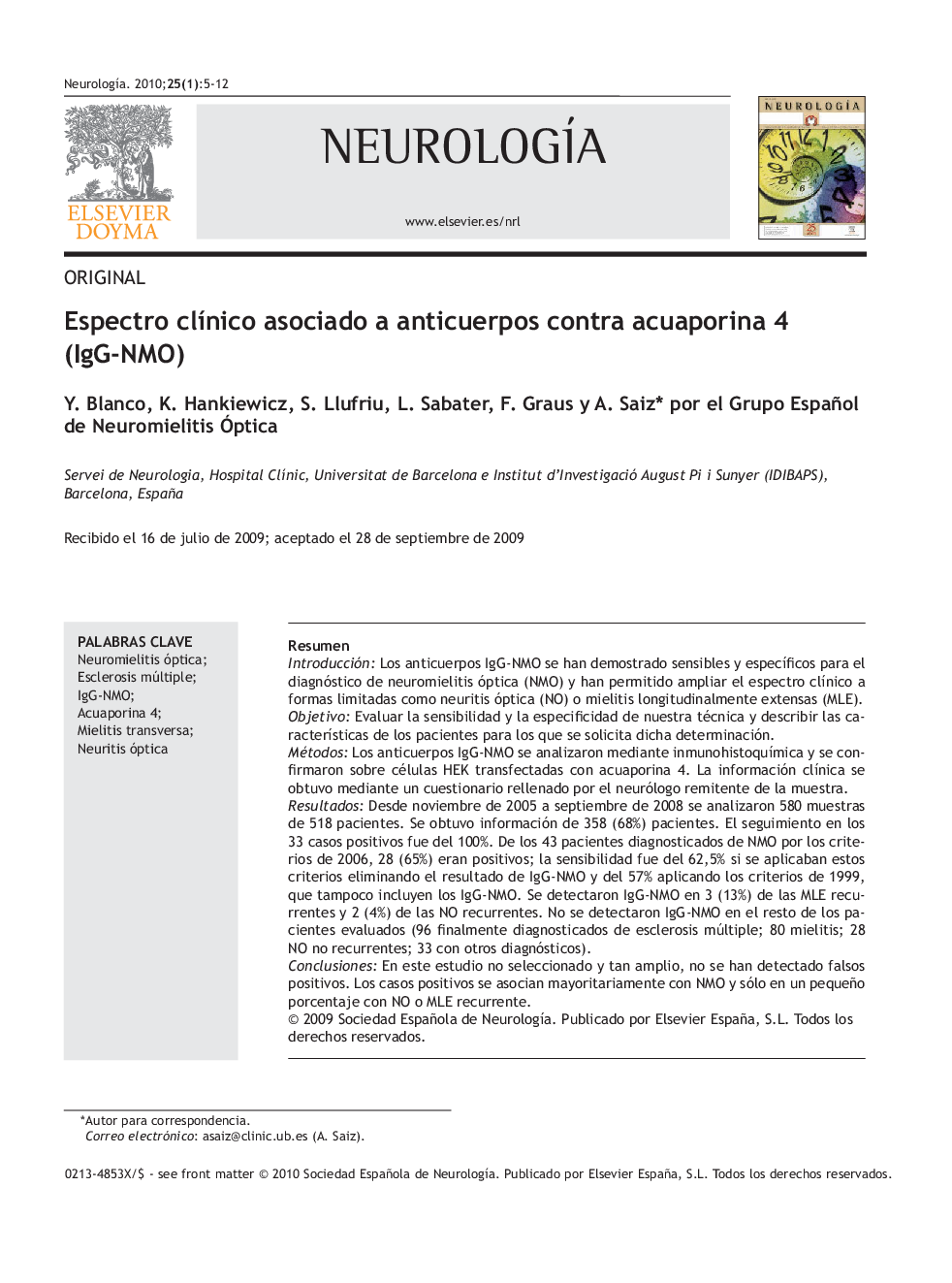| Article ID | Journal | Published Year | Pages | File Type |
|---|---|---|---|---|
| 3076506 | Neurología | 2010 | 8 Pages |
ResumenIntroducciónLos anticuerpos IgG-NMO se han demostrado sensibles y específicos para el diagnóstico de neuromielitis óptica (NMO) y han permitido ampliar el espectro clínico a formas limitadas como neuritis óptica (NO) o mielitis longitudinalmente extensas (MLE).ObjetivoEvaluar la sensibilidad y la especificidad de nuestra técnica y describir las características de los pacientes para los que se solicita dicha determinación.MétodosLos anticuerpos IgG-NMO se analizaron mediante inmunohistoquímica y se confirmaron sobre células HEK transfectadas con acuaporina 4. La información clínica se obtuvo mediante un cuestionario rellenado por el neurólogo remitente de la muestra.ResultadosDesde noviembre de 2005 a septiembre de 2008 se analizaron 580 muestras de 518 pacientes. Se obtuvo información de 358 (68%) pacientes. El seguimiento en los 33 casos positivos fue del 100%. De los 43 pacientes diagnosticados de NMO por los criterios de 2006, 28 (65%) eran positivos; la sensibilidad fue del 62,5% si se aplicaban estos criterios eliminando el resultado de IgG-NMO y del 57% aplicando los criterios de 1999, que tampoco incluyen los IgG-NMO. Se detectaron IgG-NMO en 3 (13%) de las MLE recurrentes y 2 (4%) de las NO recurrentes. No se detectaron IgG-NMO en el resto de los pacientes evaluados (96 finalmente diagnosticados de esclerosis múltiple; 80 mielitis; 28 NO no recurrentes; 33 con otros diagnósticos).ConclusionesEn este estudio no seleccionado y tan amplio, no se han detectado falsos positivos. Los casos positivos se asocian mayoritariamente con NMO y sólo en un pequeño porcentaje con NO o MLE recurrente.
IntroductionThe description of a highly sensitive and specific biomarker for neuromyelitis optica (NMO-IgG/aquaporin-4 antibody) extended the clinical spectrum of NMO to limited forms such as optic neuritis (ON) and longitudinally extensive myelitis (LEM).ObjectiveTo asses the sensitivity and specificity of our assay, and to describe the clinical characteristics of the patients who were tested for NMO-IgG.MethodsNMO-IgG was analysed by immunohistochemistry and confirmed by assay on HEK cells transfected with aquaporin-4. The clinical information was obtained from forms filled in by the referring neurologists.ResultsA total of 580 samples from 518 patients were analysed from November 2005 to September 2008. Clinical information was available from 358 (68%) patients. All 33 (100%) positive cases were followed up. Twenty-eight of the 43 (65%) patients diagnosed with NMO by the revised criteria of 2006 were positive; the sensitivity was 62.5% when applying the same criteria, but discounting the criterion of NMO-IgG status, or 57% when applying the criteria of 1999. NMO-IgG was detected in 3 (13%) of the recurrent LEM and 2 (4%) of the recurrent ON. NMO-IgG was not detected in the remaining patients (96 with a final diagnosis of multiple sclerosis; 80 with myelitis; 28 with non-recurrent ON; and 33 other diagnosis).ConclusionsNo false positive cases were found in this large and non-selected study. NMO-IgG positive cases were mostly associated with NMO, and only in a low percentage with recurrent ON or LEM.
